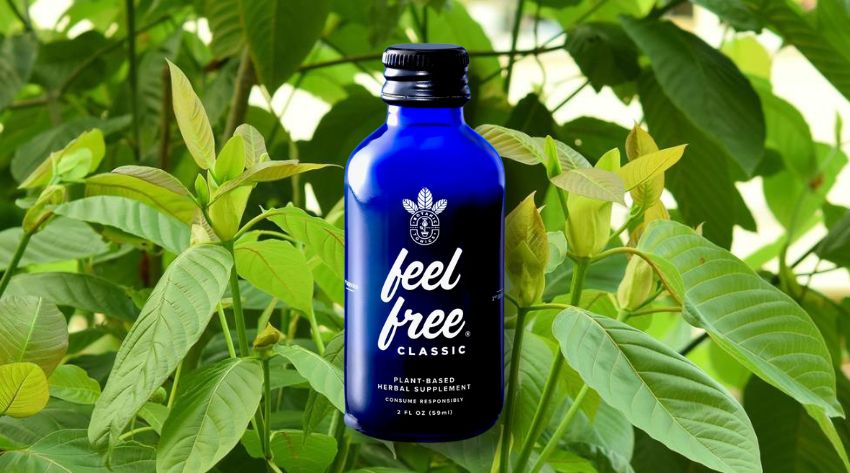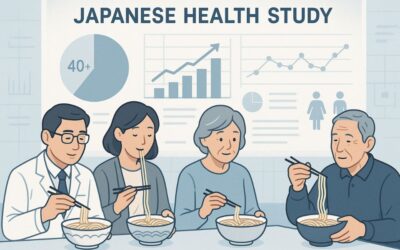It started like so many other wellness trends—quietly gaining traction in TikTok videos, popping up in gas stations and corner stores, and marketed as a “natural” way to boost mood and energy. The product? A small blue bottle called Feel Free from Botanic Tonics.
It’s pitched as an herbal tonic for energy, focus, and relaxation—an appealing mix for stressed-out, overworked consumers looking for something quick and easy. But now, warnings are flooding in from doctors, addiction specialists, and consumers who’ve experienced troubling side effects. Some people turn to herbal tonics like Feel Free as alternatives to alcohol, but these alternatives can carry similar risks of dependence and misuse. In particular, kratom addictive potential is a concern, as kratom can be addictive and may lead to physical dependence and withdrawal symptoms.
What’s in Feel Free?
The star ingredient is kratom (Mitragyna speciosa), a plant native to Southeast Asia, derived from a tree native to the region.
How it works: Kratom contains alkaloids—primarily mitragynine—that bind to opioid receptors in the brain and is often consumed as kratom powder. In low doses, it can provide more energy, alertness, and focus, acting as a stimulant; in higher doses, it can act like a sedative or painkiller. People use kratom for its mood-lifting, energy-boosting, and pain-relieving effects.
Why it’s risky: This opioid receptor activity is the same pathway responsible for drug dependence and withdrawal. In other words, while kratom is plant-based, it interacts with your brain in a very similar way to prescription opioids—without the medical oversight or dosage control.
The “natural” trap: Many assume “herbal” means safe, but nature is full of potent, habit-forming compounds. Nicotine and morphine are both plant-derived too.
The TikTok Backlash
Over the past few months, TikTok creators have been posting videos warning others about their experiences with Feel Free:
Withdrawal symptoms: Users report anxiety, irritability, muscle aches, nausea, and insomnia after stopping regular use.
High tolerance: Some say they started with one bottle and quickly escalated to several a day to feel the same effects.
Health scares: ER visits have been reported for heart palpitations, dizziness, and severe nausea.
Teen access: Multiple videos describe underage customers trying to buy the product at gas stations—no ID required.
Social media warnings: A video posted by Instagram creator Michael Brown warns about the dangers of Feel Free, demonstrating how easily children and young people can access the product and raising concerns about its addictive potential and misuse among minors.
While Botanic Tonics claims over 129 million servings sold with fewer than 1,000 formal complaints (less than 0.001%), the FDA and public health experts remain concerned—especially because kratom’s stronger compounds, like 7-hydroxymitragynine, are far more potent than what most consumers realize.
A Wake-Up Call About OTC “Mood Boosters” and Withdrawal Symptoms
The attention surrounding Feel Free is a timely wake uo call to the hidden dangers of over-the-counter supplements and tonics that make vague claims like energy boost or stress relief:
No meaningful regulation: In the U.S., dietary supplements aren’t required to prove safety or efficacy before hitting the shelves.
Purity is questionable: Many products are contaminated with mold, bacteria, heavy metals, or undisclosed ingredients. There are many safety issues associated with these products, including contamination and inconsistent potency.
Dosing is a wild card: Label claims are often inaccurate—some products have much higher (or lower) doses than listed. Some products may contain more kratom than is naturally found, increasing the risk of adverse effects.
Short-term high, long-term harm: Many quick-fix mood boosters tax your adrenal glands, disrupt brain chemistry, and increase dependency risk.
Kratom is not classified or approved as a food, and its safety profile remains uncertain.
Just because something is “herbal” and available over-the-counter doesn’t mean it’s safe for daily use—or at all.
The Regulatory Gray Area: Why These Tonics Slip Through the Cracks
Despite their popularity and “natural” branding, kratom products and herbal tonics like Feel Free exist in a regulatory gray area that puts consumers at risk. The Drug Enforcement Administration (DEA) has flagged kratom as a drug of concern, and the FDA has issued warnings about its safety issues, but these products still line the shelves of gas stations and convenience stores across the country.
One major reason these tonics slip through the cracks is the lack of comprehensive research on their chemical compounds and potential therapeutic uses. A kratom report can provide detailed analyses, safety assessments, and regulatory concerns related to kratom usage, and such reports are needed to inform both consumers and regulators. While kratom leaves have a long history of use in Southeast Asia, there’s limited scientific understanding of how the active ingredient—mitragynine—affects the brain, especially when combined with other drugs or plant ingredients. This knowledge gap makes it difficult for agencies to regulate kratom use or set safety standards.
The kratom industry itself is largely unregulated, which means kratom products can vary widely in potency and purity. Some may contain dangerously high doses of the active ingredient, while others are contaminated with heavy metals or other substances. This inconsistency increases the risk of negative consequences, including high blood pressure, seizures, respiratory depression, and even death. The risk of overdose is especially high when kratom is used alongside other drugs, as the combination can amplify dangerous effects on the brain and body.
Reports of kratom exposures have also raised alarms, particularly among young people. The FDA has documented a small number of deaths linked to kratom use, often involving other substances. In some cases, kratom use during pregnancy has led to neonatal abstinence syndrome, where newborns experience withdrawal symptoms due to exposure in the womb.
These serious outcomes highlight the potential for substance use disorder and opioid use disorder, especially when kratom is used to self-treat conditions like anxiety, depression, or pain without medical supervision. It is important to note that kratom has not been proven to treat any medical conditions and may cause harm.
Another concern is the way kratom interacts with the same receptors in the brain as opioids—specifically, the mu opioid receptors. This means kratom can be addictive, leading to withdrawal symptoms such as nausea, trouble breathing, and severe cravings when someone tries to stop.
The risk is even higher when kratom is combined with other plant ingredients like kava, which acts on similar brain pathways and can further increase the risk of addiction, respiratory depression, and other negative consequences.
Recognizing these risks, researchers and organizations like the National Institute on Drug Abuse and the National Center for Complementary and Integrative Health are calling for more research to better understand kratom’s effects, potential therapeutic uses, and safety issues. Ongoing studies and FDA investigations are underway to advance scientific understanding of kratom. Until more is known, experts urge caution—especially for young people and those with a history of substance abuse or mental health conditions.
The Impact on Young People
Kratom’s growing popularity among young people is raising serious red flags for health experts and the Drug Enforcement Administration. Kratom products are often marketed as harmless herbal supplements, but the reality is far more concerning—especially for teens and young adults who may not be aware of the risks.
Kratom leaves, native to Southeast Asia, contain chemical compounds that interact with the same receptors in the brain as opioids. This means that kratom use can mimic the effects of opioid drugs, leading to a risk of substance use disorder and even opioid use disorder. The National Institute on Drug Abuse warns that young people who use kratom are at increased risk for drug abuse, withdrawal symptoms, and other negative consequences.
Recent kratom reports have documented a rise in kratom exposures among young people, with cases of high blood pressure, trouble breathing, and seizures being reported. In some instances, kratom use during pregnancy has resulted in neonatal abstinence syndrome—a condition where newborns experience withdrawal symptoms due to exposure to kratom in the womb.
Getting Help for Addiction
If you or someone you care about is struggling with kratom addiction, it’s important to know that help is available—and recovery is possible. Kratom use can lead to serious negative consequences, including respiratory depression, overdose, and even death. The FDA has also warned that kratom products may be contaminated with heavy metals and other harmful substances, increasing the risk of severe health problems.
The first step in overcoming kratom addiction is acknowledging the problem and reaching out for support. Substance abuse and addiction can feel isolating, but you don’t have to face it alone. Mental health services and substance abuse treatment centers are equipped to help you develop a personalized treatment plan that addresses both the physical and emotional aspects of addiction.
A Safer, Ingredient-Backed Approach to Mood, Stress Support, and Substance Abuse Prevention
If the goal is steady energy, mental clarity, and emotional balance without the crash, it’s wise to focus on ingredients that have been studied for their ability to support the body’s own systems—rather than overpowering them.
Here’s where the following supplements can help:
Accelerated Methylene Blue®
Methylene blue is a compound that has been studied for its effects on mitochondrial health, brain energy metabolism, and cognitive performance. Research suggests it can support ATP production by participating in the electron transport chain, helping optimize energy output in both brain and body cells.
It may also promote neuroprotection by reducing oxidative stress and shielding neurons from free radical damage, while improving brain oxygen utilization to enhance mental clarity and focus.
In addition, methylene blue has been shown to influence neurotransmitter systems tied to mood regulation, supporting a more balanced emotional state.
By boosting energy metabolism and lowering oxidative burden, it may also encourage greater cognitive endurance, helping sustain focus and mental stamina during periods of high demand.
Accelerated Gold®
Gold nanoparticles have been traditionally used in wellness for thousands of years and, much like colloidal silver, may help support a healthy immune system, promote mental clarity and focus, and encourage healthy nerve signaling and communication between brain cells. They may also help foster relaxation without causing sedation. Accelerated Gold® takes this even further, as it has been optimized with Scalar frequencies designed to enhance its effectiveness.
Accelerated Cogniblast®
Nootropics, often called “smart supplements,” are natural or synthetic compounds that support brain function, memory, focus, and overall cognitive performance. By enhancing neurotransmitter activity, improving blood flow to the brain, and supporting healthy energy metabolism, nootropics can help sharpen mental clarity, boost learning capacity, and improve resilience to stress.
Many nootropics also provide antioxidant and neuroprotective benefits, shielding brain cells from free radical damage and supporting long-term brain health. This makes nootropics valuable not only for students and professionals looking to maximize focus and productivity, but also for anyone wanting to maintain cognitive vitality as they age.
Accelerated Cogniblast® takes nootropic support to the next level by combining cutting-edge ingredients designed to work synergistically for both immediate and long-term results. Formulated to fuel brain energy, optimize neurotransmitter balance, and improve oxygen utilization, Cogniblast helps sustain focus, elevate mood, and increase mental stamina during times of high demand.
By pairing powerful nootropic compounds with Accelerated Health Products proprietary frequency-enhanced delivery, Cogniblast may helpwith sharper cognition, improved productivity, and greater mental resilience—making it a daily ally for peak performance and long-term brain health.
Conclusion and Final Thoughts
Kratom and kratom products have quickly moved from niche herbal remedies to widely available substances found in gas stations and online stores, but their growing popularity comes with a host of safety issues and real risks. Despite being marketed as a natural alternative to other drugs, kratom’s chemical compounds—especially mitragynine and 7-hydroxymitragynine—act on the same receptors in the brain as opioids. This means kratom use can lead to substance use disorder, opioid use disorder, and a range of withdrawal symptoms that mirror those seen with prescription opioids.
The Drug Enforcement Administration has classified kratom as a drug of concern, and the FDA has issued repeated warnings about its potential for addiction, overdose, and even death. Reports of kratom exposures have included cases of high blood pressure, seizures, nausea, respiratory depression, and trouble breathing. In some tragic instances, kratom use has been linked to neonatal abstinence syndrome in newborns and fatal overdoses, especially when combined with other drugs.
One of the biggest challenges is the lack of regulation and standardization in kratom products. The amount of active ingredient can vary wildly from one bottle or powder to the next, and contamination with heavy metals or other harmful substances is a real risk. This unpredictability makes it nearly impossible for users to know what they’re actually consuming, increasing the likelihood of negative consequences and drug abuse.
Young people are especially at risk. The easy access to kratom at gas stations and through short videos on social media has led to a surge in use among teens and young adults, many of whom are unaware of the dangers. The misconception that kratom is a safe, herbal way to boost mood or treat anxiety and depression can quickly spiral into addiction, withdrawal, and serious mental health challenges.
While there is ongoing research into the potential therapeutic uses of kratom, the National Institute on Drug Abuse and the National Center for Complementary and Integrative Health both stress that much more research is needed to fully understand its effects, risks, and possible benefits. Until there are clear, evidence-based guidelines, the risks of kratom use—including overdose, addiction, and even death—far outweigh any unproven benefits.
If you or someone you know is struggling with kratom use, substance abuse, or withdrawal symptoms, it’s crucial to seek help from medical professionals or mental health services. Treatment for kratom addiction often requires a comprehensive approach, including counseling, support groups, and sometimes medication.
Ultimately, the decision to use kratom or any other substance should be made with caution and a full understanding of the risks. By prioritizing education, more research, and stronger regulation, we can help reduce the negative consequences of kratom use and protect public health—especially for young people and those most vulnerable to substance use disorder. The conversation around kratom is far from over, but staying informed and making safe choices is the best way forward.
Sara Banta
Sara Banta is a Stanford University Graduate with a Degree in Economics and Psychology, and a certified Natural Supplement Expert & Graduate of the Institute for Integrative Nutrition. Sara is the Founder of Accelerated Health Products and host of the health & wellness podcast, Accelerated Health Radio.
- Sara Bantahttps://sarabantahealth.com/author/sarabanta/
- Sara Bantahttps://sarabantahealth.com/author/sarabanta/
- Sara Bantahttps://sarabantahealth.com/author/sarabanta/
- Sara Bantahttps://sarabantahealth.com/author/sarabanta/









